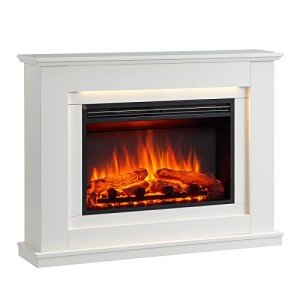
Large Fireplaces
關注總覽
-
工作分類 農林漁牧水電資源業
-
已發佈的工作 0
公司描述
The 10 Most Terrifying Things About Wood Burning Fireplaces UK
Wood Burning Fireplaces in the UK: A Comprehensive Guide
Wood burning fireplaces have long been a staple of heat and appeal in homes throughout the UK. The crackling sound of burning wood and the flickering of flames create a welcoming environment, changing a house into a warm sanctuary. With the growing trend of eco-friendly heating options, wood burning fireplaces are ending up being progressively popular once again. This short article supplies an in-depth look at wood burning fireplaces in the UK, their benefits, guidelines, upkeep, and other necessary information for potential buyers and users.
Understanding Wood Burning Fireplaces
Wood burning fireplaces can be specified as enclosed spaces designed for burning wood, supplying both heat and visual appeals to living spaces. They are available in various styles, accommodating modern visual appeals and traditional styles.
Types of Wood Burning Fireplaces
-
Open Hearth Fireplaces: Traditional in design, open hearth fireplaces offer an authentic experience. Nevertheless, they are less efficient and can result in heat loss.
-
Wood Burning Stoves: These are closed systems that burn wood efficiently. They can be freestanding or inserted into existing fireplaces.
-
Fireplace Inserts: Designed to be fitted into open hearths, these inserts improve combustion performance while maintaining the traditional appearance.
-
Pellet Stoves: These are modern wood burning home appliances that make use of compressed wood or biomass pellets, providing a cleaner burn and greater effectiveness.
-
Outdoor Fireplaces: These are constructed for external use, typically enhancing outdoor living spaces and offering heat during gatherings.
Benefits of Wood Burning Fireplaces
-
Eco-Friendly: When sourced sustainably, wood burning can be a carbon-neutral heating service.
-
Economical: With rising energy rates, using wood can be a more affordable choice, specifically if you have access to totally free or low-cost lumber.
-
Aesthetic Appeal: The ambiance created by a roaring fire is unmatched, including character and beauty to any space.
-
Flexibility: Wood burning fireplaces come in numerous design and styles, making them suitable for practically any interior design.
-
Self-Sufficient Heating: In remote places or throughout power outages, wood burning fireplaces provide a reputable source of heat.
Regulations Surrounding Wood Burning Fireplaces in the UK
To preserve air quality and ensure safety, the UK federal government and regional authorities have established regulations concerning making use of wood burning fireplaces.
-
Smoke Control Areas: Many urban areas are designated as smoke control locations where just ‘Exempt Appliances’ can be used to burn wood.
-
EPA and Defra Certification: Wood ranges and fireplaces ought to adhere to policies from the Environmental Protection Agency (EPA) and the Department for Environment, Food & & Rural Affairs (Defra).
-
Biomass Requirements: Only sustainably sourced wood logs should be burned, sticking to guidelines to minimize carbon emissions.
-
Air Quality Regulations: Regular checks might be required to guarantee that your fireplace does not produce excessive smoke emissions.
| Element | Details |
|---|---|
| Type of Fireplace | Open Hearth, Wood-Stove, Insert, Pellet Stove, Outdoor |
| Eco Friendliness | Sustainable sourcing makes it carbon-neutral |
| Regulations | Must abide by local smoke control and emissions laws |
| Effectiveness | Differs by type; wood stoves normally provide higher performance |
| Aesthetic Options | Large range of designs, from traditional to modern styles |
Maintenance of Wood Burning Fireplaces
Proper upkeep is necessary to make sure the security and longevity of wood burning fireplaces. Following these standards can assist property owners enjoy their fireplaces year after year.
Regular Maintenance Tips
-
Yearly Inspections: Hire an expert chimney sweeper to check and clean the chimney a minimum of once a year.
-
Check for Creosote Buildup: Creosote, a byproduct of wood burning, can collect in the chimney and present fire risks.
-
Fireplace Cleaning: Regularly clean out ash and debris from the firebox to optimize efficiency.
-
Look for Cracks and Damage: Inspect the fireplace and flue for fractures or damage that might impact efficiency or security.
-
Use Seasoned Wood: Only burn dry, experienced wood to decrease creosote accumulation and enhance effectiveness.
Safety Precautions
-
Set Up Carbon Monoxide Detectors: Ensure that your home is geared up with CO detectors to keep track of gas levels.
-
Keep Flammable Items Away: Maintain a safe range in between the fireplace and combustible items.
-
Never Ever Leave Unattended Flames: Always monitor the fireplace while it’s in use.
-
Use a Fire Guard: Install a screen or guard to avoid ashes from escaping the fireplace.
-
Inform Everyone: Ensure that all family members understand the safe operation of the fireplace.
FAQs About Wood Burning Fireplaces in the UK
Q: Is it legal to use a wood burning fireplace in metropolitan locations?
A: Yes, however you must abide by local guidelines, especially if you live in a smoke control location.
Q: How can I tell if my home appliance is exempt?
A: Look for the ‘Exempt Appliance’ label certified by Defra, suggesting that the home appliance meets emission limitations.
Q: What type of wood is best for burning?
A: Seasoned woods like oak, ash, and birch burn most effectively. Softwoods like pine can produce more creosote.
Q: How frequently should I clean my chimney?
A: It’s advised to clean and check your chimney at least as soon as a year, regularly if you use it often.
Q: Are there benefits to using a wood burning range over an open fireplace?
A: Yes, wood burning stoves are typically more effective, produce less smoke, and provide better heat retention compared to open hearth fireplaces.
Wood burning fireplaces stay a treasured function of many homes across the UK, mixing functionality with aesthetic appeal. By understanding the various types, advantages, policies, and maintenance requirements, homeowners can take pleasure in the heat and atmosphere of a wood burning fireplace while sitting conveniently within regulative borders. With a growing focus on sustainability, wood burning may continue to act as a practical heating solution for several years to come. Whether you’re an experienced user or checking out the alternative for the very first time, guaranteeing accountable usage and upkeep will maximize both safety and pleasure.

